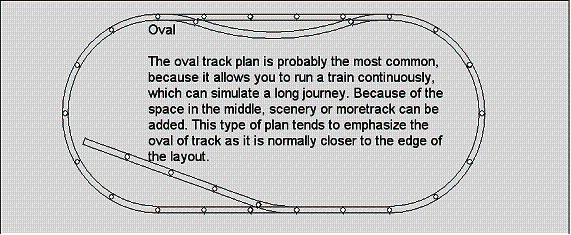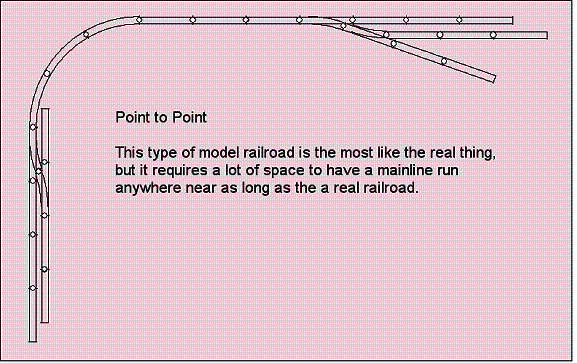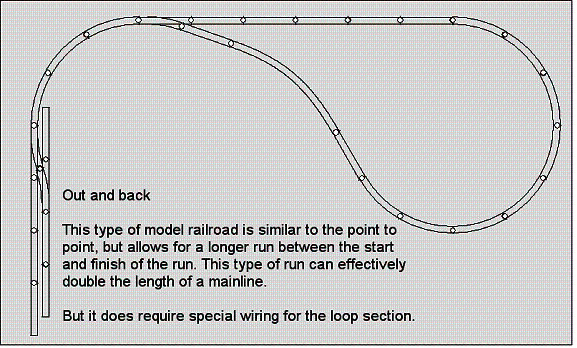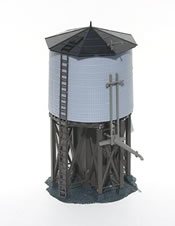Cover
All Aboard!
Start With The Basics
Why The Track Is So Important
How Does The Power Supply Work?
Analog
and DCC Explained
Layout Options Explained
Locomotives And Rolling Stock
What Should You Start With?
How Do You Create A Good Layout
More On Layouts and LDE
How to Create Realistic Scenery
Explain Weathering Techniques
How To Repair Problems
BONUS SECTIONS
Frequently Asked Questions
Glossary of Important Terms
Model Railroad Yard Design Explained Step-By-Step
Model Train Layout Track Plans
Garden Railroads
Mastering An Airbrush Step-By-Step
More
Model Railroad Resources
| How Do You Create A Good Layout |
| Should You Alter Your Layout? |
What you create (or recreate) is really over to you. You ideas can and probably will change and evolve as your knowledge expands. That's why you need to be prepared to make changes and add new elements as you go along.




Regardless of whether you are replicating
a modern day section of railroad or a scene from yesteryear, it's best
to research the section of full-size railroad that you will be modeling.
Document it physically and operationally, and then scale it down to fit
in a reasonable space. The section could be almost anything: shunting
yards, a horseshoe curve, engine terminal, industrial theme, town scene,
or even an important location from history.
The objective is to then closely replicate the originals or real thing in terms of dimensions and authenticity. In other words, creating a scale rendition of real full size (prototype) trains and surroundings. The huge advantage in this approach is that it can help you to do a better job. By replicating a section, or all of a model railroad, you'll know it will look and operate just like the real thing.
Research the era and location of the scene you are modeling. Take a look at magazines that feature sets from that time period to get your creative ideas flowing. Select the time setting in which you’re most interested. The steam era, the transition era from steam to diesel, or maybe a modern day theme…what is your passion?
Whatever you choose, the interesting aspects that caught your eye in the first place can be scaled down - selectively compressed - simply by following the full-sized (prototype) example.
| Quick
Tip: |
Layouts, like full-size railroads, aren't cast in concrete. You can construct them using relatively easy-to-change materials like wood, plaster and foam. You need to allow for future growth. It is usually best to start off small. That way you can test as you build, and make changes when needed to improve operation or appearance of your layout.
Layout design and construction are both continuous learning processes. In reality, most model railroads are the result of an ongoing series of changes and additions to the original design efforts. Some even undergo an extreme makeover and are completely rebuilt from the ground up to embrace a new theme.
So, it's best to learn as much as you can so that you can make well-informed decisions during the planning and building process. In this way you'll be able to build a layout in the knowledge that you can still adapt and improve on it as time goes on.
Quick
Tip: When space is limited in the family home, model railroaders of try and think outside the square when locating layouts. A lot of people decide that a loft is a great 'out of the way' place to set up a model train set. Yes, a loft can be a good solution, but be careful and do your homework first. Unless the loft has been properly converted there is a danger that you may overload the ceiling joists (resulting in cracked ceilings in the room below). There could also be the possibility of overloading the entire roof trusses resulting in a collapse... far worse scenario. Always seek professional advice, because some roofs cannot be modified safely to accommodate a load bearing down from "inside" the roof. If in doubt consult an engineer, or at least an architect before locating your train set in a loft. |
Return
to top of page
© 2006 Robert
Anderson, Market Leaders Ebooks, all
rights reserved
